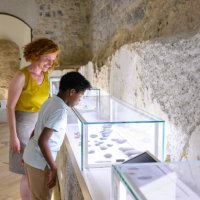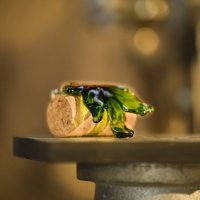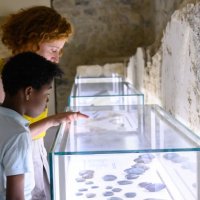Le Pic Saint-Loup
The Pic Saint-Loup: Wild and unspoilt.
On the outskirts of Montpellier, the Pic Saint-Loup is the emblem of a region that has managed to remain wild and retain its sense of mystery.
Probably to preserve itself better, perhaps out of shyness or to respect its natural environment and way of life.
But if you take the time to tame it, it will reveal its hidden treasures and open the doors to a whole, sincere world, where human relationships and healthy living are part of its daily life and its history.

Situated between the Mediterranean and the Cévennes, the Grand Pic Saint-Loup offers a kaleidoscope of landscapes just outside Montpellier.
Plains, mountains, steep gorges and small rivers promise breathtaking panoramas for lovers of authenticity. Let's set off on an adventure! 57 km² of natural and agricultural areas, culminating in the majestic Pic Saint-Loup, 658 metres high and towering over the Causse de l'Hortus and the crests of the Séranne.
rehistory and landscapes come together at the Hortus* cave and the Rocher du Causse, and everywhere, dolmens, dry stone walls and capitelles (stone huts) are part of a landscape shaped by man and marked by agropastoralism.
Discover the characterful villages with their medieval architecture and enjoy the freshness of the riverbanks, the shade of the signposted footpaths or the gentle sunshine over the vineyards. Treat yourself to a magical communion with nature.
The forces of nature.
If the silhouette of the Pic Saint-Loup is so distinctive in a hilly landscape that it has become its emblem, it's because it was formed by a particular geological phenomenon: the anticlinal fold.
Around 140 million years ago, at the end of the Jurassic period, our beautiful country was submerged by an ancient sea called Tethys. Millions of years of marine sedimentation, partly resulting from the accumulation of shells, formed the material that would become the limestone of our garrigues.


During the surrection* of the Pyrenean mountain range around 40 million years ago, this limestone was pushed upwards over dozens of kilometres. As it slid along the Saint-Gély - Corconne fault, the limestone strata bent and rose, forming the Pic Saint-Loup and its distinctive silhouette. The Hortus opposite has a different geological origin.
The Hortus limestone dates from the Cretaceous period, and is therefore more recent than the Pic Saint-Loup limestone.
These two opposing reliefs therefore have no common geological origin. The gap between them is simply the result of the erosion of sedimentary layers that are softer than the limestone.
The Pic Saint-Loup.... View of the Pic Saint-Loup.
The Pic Saint-Loup (Hérault), just outside Montpellier, was formed 50 million years ago by a geological magic trick when the Pyrenees were being formed. It is by far a must for hikers in the region. The 245km route offers four loops. Despite the 300-metre difference in altitude, the walk is breathtaking. "You can't help but stop and admire it at some point, because it's just magnificent," says one hiker.
Reportage publié et réalisé par les équipes de France 2.







